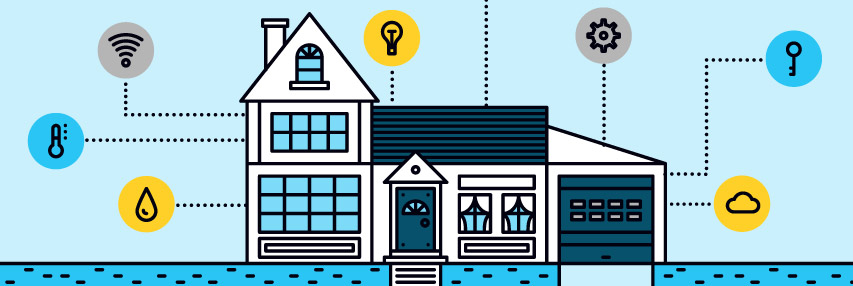First-time Homebuyer’s Guide: 6 Essential Tips for Getting Started
When you’re buying your first home, it can be tempting to mentally skip ahead to the fun part where you’re picking out window treatments and hanging your favorite artwork.
However, as anyone with prior experience will tell you, the process of buying a home should begin long before you start planning your epic remodel. As a first-time homebuyer, checking a few boxes early on in the process can help ensure you’re prepared to act when the home you want goes on the market.
Want to know where to start? Here are six essential steps for setting up your home buying experience the right way.
1. Download your credit report
Since credit score is often a determining factor in being approved for a mortgage loan and getting the lowest interest rate possible, it’s important to know what your score says about you. You can download your credit report for free on an annual basis, which allows you to catch any errors that may be affecting your score. According to FICO, two common reporting errors are late payments and incorrect balances due on open accounts.
If you find any errors on your report, file a dispute with the reporting agency to get them removed. Even when the mistakes are obvious, the process of removing the listings and adjusting your score can take time, so it helps to start on this step as early as possible. Another advantage to starting early is that you’ll have more time to pay down outstanding balances, which can also improve your score.
2. Learn how much home you can afford
Before you start stalking your real estate app of choice and spending every Sunday at open houses, it’s helpful to know just how much house you can afford. That’s where mortgage pre-qualification comes in. After entering just a few pieces of information, you can get an idea of the loan amount and interest rates you’re likely to see when eventually apply for a loan. While a pre-qualification isn’t as formal as a pre-approval (more on that below), it’s a helpful guide to keep your search confined to the homes in your range (and SoFi’s mortgage pre-qualification”> takes only two minutes).
3. Hire an experienced realtor
With all the apps and information available on the web today, it’s easy to think that buying a home is as easy as picking your favorite place and extending an offer. The truth is that without an experienced realtor, you’ll soon find yourself neck-deep in contracts, negotiations, legalities and paperwork that are confusing and time-consuming – and worse, can make you miss out on the home you want or end up with an unfavorable price.
As a first-time homebuyer, it really helps to have someone who knows how to navigate the process on your side. It’s also important to note that you don’t necessarily save money by forgoing the realtor – in most cases the seller’s agent takes the full commission if the buyer doesn’t work with anyone. In fact, a realtor can help you save money if they know the neighborhood and/or home well and can give you valuable negotiating advice.
4. Be frugal in the months before buying a home
As a first-time homebuyer, plan on a little extra scrutiny regarding your finances in general and your spending habits specifically. Most lenders view sharp swings in your savings account balance and increases in revolving debt as big red flags that could indicate you’re a high-risk borrower – which can have a negative effect on your ability to get approved or increase the interest rate on your loan. Stability should be your goal, so avoid major purchases and new credit card accounts, at least for the time being.
5. Gather your documents
Lenders typically ask for W-2s (if you receive a paycheck), 1099s or profit and loss statements (if you’re self-employed), recent paystubs, two years of tax returns, bank statements, student loan docs and/or credit card statements. Having all your paperwork organized in advance will put you in a much better position than having to scramble every time a prospective lender asks for something new.
6. Get pre-approved for your loan
A solid credit score, submission of all required documents and a stable financial picture should help you get to the pre-approval stage. Unlike prequalification, which gives you a rough idea of how much money you can borrow at what rate, pre-approval is a more formal step in the process that allows you to submit an offer with confidence that you are officially approved for a loan. Being able to show that you are pre-approved for a loan also puts you on equal footing with competing bids from both well-funded and cash buyers – whether you’re buying your first home or your fifth.
Recommended: Once you get your loan, use this Home Improvement Cost Calculator to get an idea of how much your next renovation project will cost.
As a first-time homebuyer, the path to landing your dream place may sound daunting and complex. However, by starting with these steps, you can build a foundation that allows you to compete for any home you set your sights on – so you can turn your focus to the fun parts of owning a home.
If not now, when?
Ready to learn more? Download the SoFi Guide to First Time Home Buying to get valuable tips on this topic and much more. Our guide also demystifies modern mortgage myths around down payments, the pre-approval process, student loans, rising interest rates, and more.





